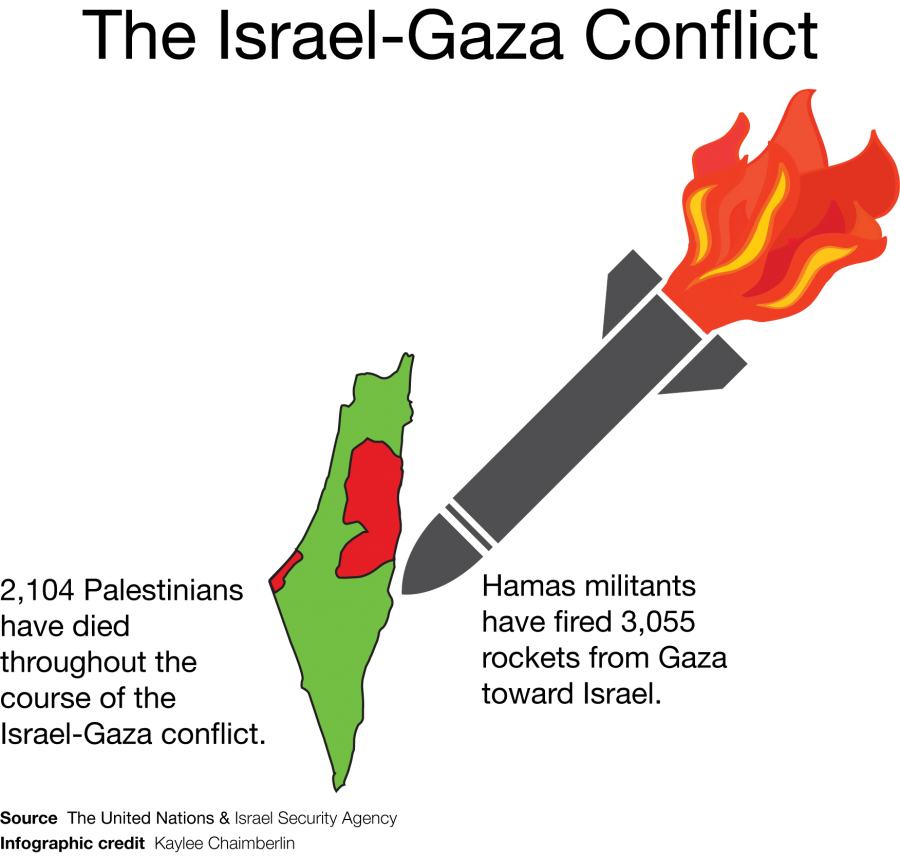No good solutions, but clear sides
The unintended consequences of the Gaza intervention are the unavoidable price of eradicating Hamas
September 4, 2014
History repeats itself. At least it does in some regions. On July 8, the conflict between Israel and Palestinians living in Gaza re-erupted. These events were brought on by high tensions caused by the kidnapping and murder of three Israeli adolescents and the subsequent death of a muslim teen in the West Bank.
The sudden increase in hostilities drew criticism from many in the international community who indict Israel for using nonreciprocal force and not taking enough action to prevent civilian casualties.
However, these accusations are unfounded. In order to understand the full scope of the conflict you need to look at the scenario prior to the kidnappings.
This bout of fighting ended a ceasefire which on the surface appeared to have held since 2012. The world has since learned that it was literally only on the surface. Almost since the ceasefire took effect, Hamas militants began building an extensive tunnel system under the Gazan border and into Israel. According to members within the organization, the sole purpose of the tunnels was the kidnapping of civilians for ransom.
When looking at the reasons for the sudden breakdown of peace in July, it doesn’t make sense to engage in debate over who fired the first shot. This conflict exists on so many layers and stretches back so far as to render that kind of finger pointing ridiculous.
It’s impossible to establish a cause for “this” conflict, because there are no isolated conflicts, there has only been one that began in 1948. The only way to judge this iteration is to look at what the two sides’ methods and objectives were.
Hamas’ objectives were clear from the beginning. They created a tunnel system for the purpose of attacking civilians and taking hostages, their operatives kidnapped and murdered teenagers in the West Bank and they began attempting to fire rockets at civilian areas for the perceived slight of Israel holding them accountable.
Israel’s objectives were also clear. A ground operation was the only feasible way to dismantle the tunnel system, and air strikes are the most effective, albeit objectionable, way to cripple Hamas’ artillery. But compared to the alternative of a more drawn out ground invasion of the more populated areas, the air option poses the least risk of escalation.
Most of the international community’s problem with the intervention can be traced further to Hamas’ own policies of firing rockets from densely populated areas and United Nations buildings in order to ensure civilian casualties. Amidst the images of Israeli planes raining fire on Gaza City, the media consistently fails to show the planes raining warning pamphlets the day before.
Every sovereign nation has the right to act when faced with the kind of neighbor Hamas represents. It’s easy to criticize Israel when only examining the surface of the issues, only noticing the bombs and not the pamphlets, the locations of casualties and not who put them in harms way, the blockade and not the tunnels. There are things that can be done better, but it is eminently clear Hamas is on the wrong side of this conflict.




